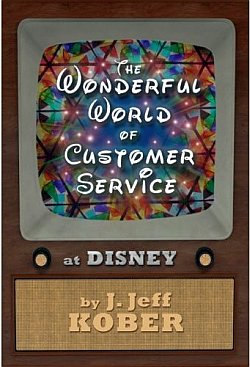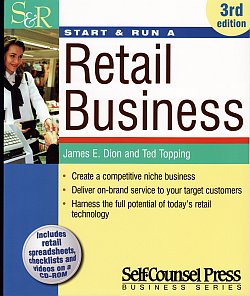FROM: Perfecting the Customer Experience A Disney Dispatch Feature
Park Cleanliness Links Guests Directly to Walt
Ted Topping spilled a half-full coffee cup while waiting for Disney's Electrical Parade, and began to learn a benchmarking lesson that links park Guests directly to "management by walking around" style of Walt Disney.
I began to learn a key Disney benchmarking lesson on the first evening of our first visit to the Disneyland Resort. It illustrates the long-term effect that a leader's vision can have on a company's values.
My partner and I had arrived early in the evening and headed straight to Disney California Adventure Park. Now, 30 minutes before the start of Disney's Electrical Parade, we were eagerly occupying a great spot on the parade route from which to photograph the floats and enjoy dessert and coffee while sitting on the pavement.
We were completely in the excitement and emotion of the moment - which may be the reason why we accidently tipped a half-full coffee cup, spilling the contents onto the pavement.
Immediately and instinctively, we grabbed our paper napkins and started to clean up the spill.
We didn't look for assistance, and we didn't hesitate. We cleaned up our own mess.
Remember that this was on an open stretch of pavement some time before the parade. We could easily have let the coffee dry in its own time, or we could have moved to a different location and simply put the moment behind us. But we didn't. Why?
Good question, the answer to which didn't become clear until months later. It turned out that our actions were the direct result of a specific value that Walt Disney instilled in the business he founded.
Things in Context
To put things in context, we needed to understand that the basic format of North American amusement parks dates back to the Chicago World's Fair of 1893. This was the first to offer a "midway" area that was separate from the exhibition halls - an addition that turned out to be so popular that rides, carnival games, and concessions formed the backbone of permanent parks across the continent for the next 50 years. Coney Island in New York was probably the best known.
By the 1950s, however, many of these amusement parks had closed or burned. Others were razed to make way for suburban development. But few people missed them, because most had become quite unsavory.
That is when Walt Disney decided to build Disneyland.
Disneyland Would Be Different
For a visionary like Walt, the thought of creating a different kind of amusement park was probably a logical extension to the family-friendly animation business he was already in.
In Walt Disney: An American Original, author Bob Thomas writes that Walt visited county fairs, state fairs, circuses, carnivals, and national parks while researching the idea of Disneyland. He studied the attractions and what made them appealing, and whether people seemed entertained or felt cheated.

Before the coffee spill: Ted Topping found a great spot on the parade route from which to photograph the floats.

Walt insisted it would stay clean because "people are going to be embarrassed to throw anything on the ground."

The hands-on involvement that Walt demonstrated is a great example of "management by walking around."

Walt Disney's pre-opening vision became reality: cleanliness became a permanent and important characteristic.

The custodial Cast Member in white and the green-painted bench opposite where Ted Topping was sitting.
Apparently, his most depressing experience was seeing Coney Island. He found it battered and tawdry, and the ride operators hostile.
But his spirit revived when he visited Tivoli Gardens in Copenhagen. Dating from 1843 and still operating successfully, the park was spotless, brightly colored, and priced within the reach of everyone. The gaiety of the music, the excellence of the food and drink, the warm courtesy of the employees - everything combined for a pleasurable family experience.
"Now this is what an amusement place should be!" Walt enthused, his vision for a fundamentally different kind of park confirmed.
Management by Walking Around
When Disneyland opened in 1955, Walt personally spent many days in the park - often sleeping overnight in his apartment above the Town Square firehouse. The hands-on involvement that he demonstrated is an excellent example of "management by walking around" long before the technique was known by that name.
This ensured that Walt's pre-opening vision would become reality: Disneyland was remarkably clean right from the start. And before long, that cleanliness became a permanent and important characteristic.
There was a telling exchange during a journalist's tour of Disneyland the week after it opened. "The park will never stay clean," the writer predicted. But Walt insisted that it would stay clean because "people are going to be embarrassed to throw anything on the ground."
He didn't want peanut shells strewn on the sidewalks, so only shelled nuts were sold inside the park. And no chewing gum. During operating hours, employees (not yet called Cast Members) mixed in with the crowds, sweeping up trash as quickly as people discarded it.
Until his death in 1966, the values of Walt Disney the man directly shaped the values of Disneyland the business. Walt's ability to experience the park in the same way as a Guest did contributed greatly to its appeal. And that appeal has lasted at least partly because the park still offers so many customer experiences that can be traced directly to him.
This is the most amazing part of the story for me, especially since I see so many businesses struggling to deliver even the basics of a good customer experience.
Lesson Learned
On a subsequent visit to the resort, when my partner and I had become more familiar with the Disney legacy and operating standards, we were sitting on a bench in front of the castle and soaking in the moment.
Seemingly from out of nowhere, a custodial Cast Member dressed in white suddenly appeared beside us. We were used to seeing sweepers with brooms, but this fellow was a step or two above that. He walked to the green-painted bench directly opposite from where we were sitting and proceeded to spray and then wipe it several times.
After he completed his task, he walked past us on his way backstage.
"What happened over there?" I asked.
"Apparently a Guest's pen leaked," he replied. "So I cleaned the bench before someone else got ink on his or her clothing."
In that response, I heard not one but two direct echoes of the values that Walt Disney set down years before.
- First, the park would not suffer the indignity of graffiti for even a day because graffiti would be removed as quickly as it was discovered.
- Second, showing respect for an unknown customer, the Cast Member softened his explanation of the ink marks and did not blame a Guest for doing something bad.
Showing respect for an unknown customer is something that Walt Disney personally did many times. His example in that area is reflected today in the Disney philosophy of treating customers as Guests.
To bring this story full circle, it then dawned on me that when my partner and I instinctively wiped up our spilled coffee while waiting for Disney's Electrical Parade, we earned that respect. And given the chance, most customers will do the same thing.
This benchmarking lesson remains part of Perfecting the Customer Experience.
For more information about Perfecting the Customer Experience, please contact Jeff Kober or Ted Topping. The next public programs are September 27 to 29, 2011 and February 21 to 23, 2012. Companies may prefer a private, tailored experience. Neither the program nor its facilitators are associated in any way with The Walt Disney Company.
Stuff Not to Skip
- Perfecting the Customer Experience
- Performance Journeys [Jeff Kober]
- Creative Insights [Ted Topping]










Comments (3)
I always love that the park has pride in their product and knowing that keeping things in great shape helps enhance an experience for someone (even if they don't REALLY notice).
Great article!